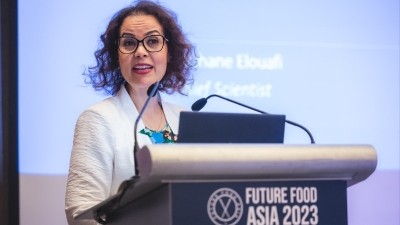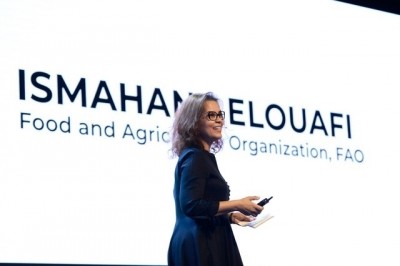FAO Exclusive Part II: Food tech and sector innovation vital for APAC to overcome ‘peculiar’ food supply and climate vulnerabilities

In Part I of our exclusive interview with United Nations Food and Agriculture Organisation (FAO) Chief Scientist Dr Ismahane Elouafi, she had highlighted on the important role that big multinational food and beverage brands play in improving the Asia Pacific food system.
Dr Elouafi has also stressed that this is particularly vital in the APAC region as faster and more varied innovation in terms of food technology and sector development is needed here, due to several factors unique to the region.
“First of all, we know based on several food security studies in the past few years that the average cost of healthy diets in APAC is a lot more than other regions, at US$3.98 per person per day,” she told FoodNavigator-Asia at the recent Future Food Asia 2023 event.
“This is lower than the global average [of US$4.04], and also means that some 44.5% of the population here are in fact unable to afford a healthy diet daily.”
According to the FAO report The State Of Food Security And Nutrition In The World 2021, there are 2.37 billion people facing food insecurity on a moderate or severe level – and slightly more than half of these, 1.2 billion to be more precise, are located in Asia.
“This unaffordability of healthy diets is already a major concern, and this is further accentuated with other peculiarities here in APAC that are threatening the food supply – one major one is the fact that the temperature is actually rising two times faster than the global average,” she said.
“This accelerated climate change means that there has been an increase in the frequency and severity of natural disasters here, which makes the region and its people even more vulnerable to food insecurity.
“There are also various changing demographics here which mean there is a lot of demand for food and land use, leading to both overpopulation and intensive agriculture, which also affect the food supply, not even counting the aforementioned natural disasters.”
In the face of such bleak-looking prospects, she believes that the solution lies in the creation of a multiplicity of solutions, which also calls for far more co-operation and collaboration between parties than at present.
“Asia’s huge population is both a challenge due to the pressure on resources, and a solution as there is a domestic market available to shield against global challenges and tackle issues – add to this the region’s uniqueness in uptaking technology and innovation, and there is so much potential for growth here,” she said.
“Technology is definitely going to be a crucial and necessary tool to overcome all the challenges that APAC is facing – and the fact is that just about all types of technology that can help us to produce more nutritious calories with less resources is very much needed.
“This means technologies that can help to increase diversification and help to pull the needed nutrition from all sources, from plants to animals to seafood and so on – which thus means that there is a need for a multiplicity of solutions, as no single type of technology is able to solve this enormous problem on its own.”
Public and private roles
Whilst new technologies are being developed and showcased, the nurturing and dispersion of these to the places they are needed the most in the agrifood system is another matter entirely, which in turn needs both governmental and private parties to step up.
“Both public and private organisations need to work together to make this work or the best technologies in the world will not get where they need to – and both have unique and important roles to play,” Dr Elouafi added.
“Private parties need to be incentivised at scale so they can also incentivise at scale – but of course companies need to be more monetarily motivated so it is essential for the public sector to provide support and direction.
“In addition, the role of consumer protection at large also falls to the public sector, so that is a very major role and where policies and regulations also come in.
“But one major player that needs to be taken better care of amongst all of this is really the farmers, the producers – I have always found it wrong that the least return of investment (ROI) always falls to the farmers when they do the hardest work in the food system, and this really needs to be changed, whether it means paying them for carbon sequestration or plain developing better ways to quantify their produce at a just price.”
















